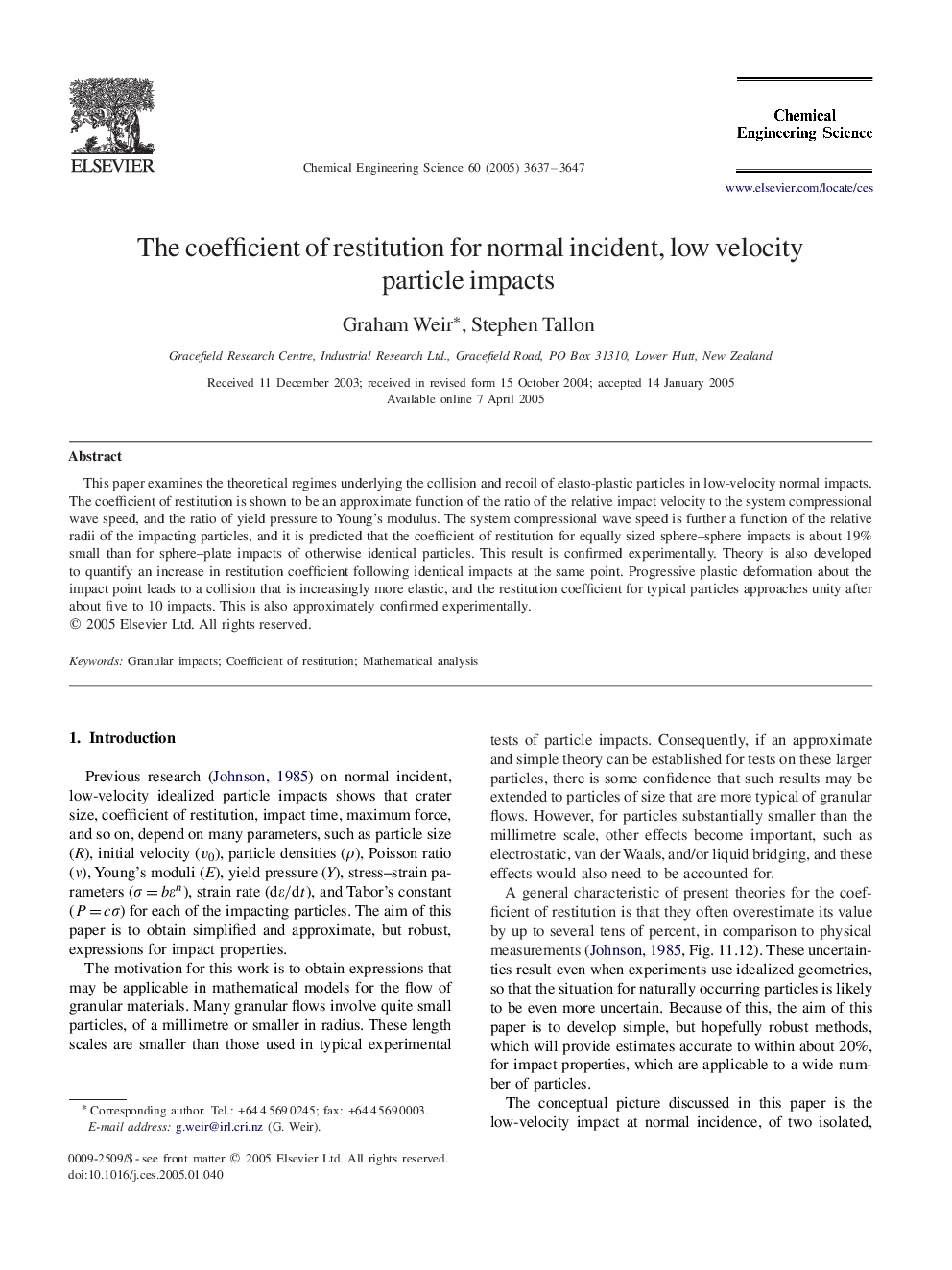| Article ID | Journal | Published Year | Pages | File Type |
|---|---|---|---|---|
| 159767 | Chemical Engineering Science | 2005 | 11 Pages |
This paper examines the theoretical regimes underlying the collision and recoil of elasto-plastic particles in low-velocity normal impacts. The coefficient of restitution is shown to be an approximate function of the ratio of the relative impact velocity to the system compressional wave speed, and the ratio of yield pressure to Young's modulus. The system compressional wave speed is further a function of the relative radii of the impacting particles, and it is predicted that the coefficient of restitution for equally sized sphere–sphere impacts is about 19% small than for sphere–plate impacts of otherwise identical particles. This result is confirmed experimentally. Theory is also developed to quantify an increase in restitution coefficient following identical impacts at the same point. Progressive plastic deformation about the impact point leads to a collision that is increasingly more elastic, and the restitution coefficient for typical particles approaches unity after about five to 10 impacts. This is also approximately confirmed experimentally.
